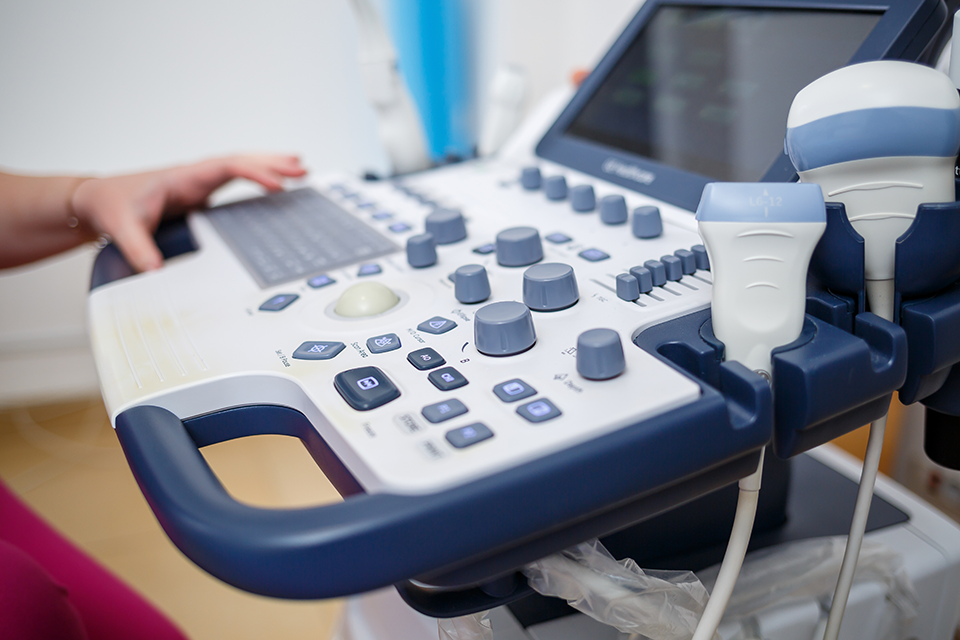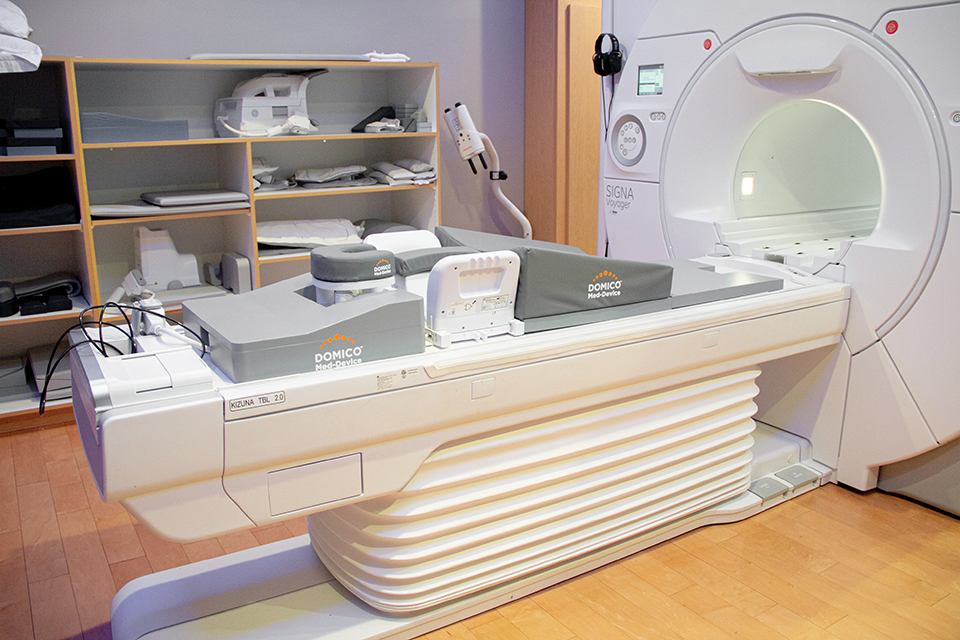3 Advantages of Using Vinyl Covered Wedges for Endovaginal Ultrasounds
Endovaginal ultrasounds are a critical diagnostic tool in gynecology and obstetrics, providing invaluable insights into a woman's reproductive...
Discover the groundbreaking technology of endovaginal ultrasound and its pivotal role in revolutionizing medical diagnostics. This innovative technique provides healthcare professionals with a closer and more detailed view of the female reproductive organs, allowing for precise and accurate diagnosis of various gynecological conditions. Endovaginal ultrasound offers enhanced visualization, improved accuracy, and early detection of abnormalities, making it an invaluable tool in the field of gynecology and reproductive medicine. By understanding the significance of endovaginal ultrasound, both healthcare providers and patients can benefit from its advanced capabilities in diagnosing and monitoring reproductive health.
Endovaginal ultrasound, also known as transvaginal ultrasound, is a medical imaging technique used to examine the female reproductive organs. It involves the insertion of a specialized probe into the vagina to obtain detailed images of the uterus, ovaries, and surrounding structures.
 This type of ultrasound provides a closer view of the pelvic organs compared to a traditional abdominal ultrasound, as the probe is placed in close proximity to the organs being examined. It offers a higher resolution and clearer images, allowing healthcare professionals to detect and diagnose various conditions more accurately.
This type of ultrasound provides a closer view of the pelvic organs compared to a traditional abdominal ultrasound, as the probe is placed in close proximity to the organs being examined. It offers a higher resolution and clearer images, allowing healthcare professionals to detect and diagnose various conditions more accurately.
Understanding endovaginal ultrasound is crucial for both healthcare providers and patients alike, as it plays a significant role in diagnosing gynecological issues and monitoring reproductive health.
- Enhanced visualization: Endovaginal ultrasound not only provides high-resolution images but also allows healthcare professionals to visualize the female reproductive organs in real-time. This dynamic imaging capability enables the identification of even subtle abnormalities that may not be visible with other diagnostic methods, leading to more accurate and comprehensive diagnoses.
- Improved accuracy: The detailed images obtained through endovaginal ultrasound offer healthcare providers a closer look at the structure and function of the pelvic organs. This enhanced level of detail enables them to differentiate between various gynecological conditions with greater precision, resulting in more targeted and effective treatment plans for patients.
- Early detection: One of the most significant advantages of endovaginal ultrasound is its ability to detect abnormalities at an early stage. By identifying issues such as ovarian cysts, fibroids, or polyps in their initial phases, healthcare providers can intervene promptly and initiate appropriate treatment strategies. Early detection often leads to better health outcomes and improved prognosis for patients.
- Minimally invasive: In addition to its diagnostic benefits, endovaginal ultrasound is a minimally invasive procedure that is well-tolerated by patients. Unlike other imaging techniques that may involve radiation or more invasive methods, such as surgery, endovaginal ultrasound is safe, comfortable, and does not pose any significant risks to the individual undergoing the examination.
These advantages collectively make endovaginal ultrasound an indispensable tool for gynecologists and reproductive medicine specialists, empowering them to deliver high-quality care and personalized treatment plans to women seeking reproductive health services.
Endovaginal ultrasound may be recommended in various situations, including:
 - Evaluation of pelvic pain: When a patient experiences pelvic pain, endovaginal ultrasound can help identify the cause, such as ovarian cysts, endometriosis, or pelvic inflammatory disease.
- Evaluation of pelvic pain: When a patient experiences pelvic pain, endovaginal ultrasound can help identify the cause, such as ovarian cysts, endometriosis, or pelvic inflammatory disease.
- Assessment of fertility issues: For individuals struggling with infertility, endovaginal ultrasound can provide valuable information about the uterus, ovaries, and other reproductive organs, helping to identify potential factors contributing to infertility.
- Monitoring pregnancy: Endovaginal ultrasound is commonly used during early pregnancy to confirm the presence of a gestational sac, assess fetal viability, and monitor the development of the embryo.
- Screening for gynecological conditions: Women with a family history of gynecological conditions, such as ovarian cancer or uterine abnormalities, may undergo regular endovaginal ultrasound screenings to detect any signs of these conditions at an early stage.
It is important to consult with a healthcare professional to determine if endovaginal ultrasound is appropriate for your specific medical needs.
To ensure a successful endovaginal ultrasound examination, it is essential to follow the preparation instructions provided by the healthcare provider. These may include:
- Emptying the bladder: In some cases, a full bladder may interfere with the quality of the ultrasound images. Therefore, the healthcare provider may recommend emptying the bladder before the procedure.
- Changing into a gown: Patients are usually asked to change into a gown to facilitate the examination and ensure comfort and privacy.
- Relaxing and staying still: It is important to remain relaxed and still during the procedure to obtain clear images. The healthcare provider will guide the patient throughout the process.
- Discussing any concerns or medications: Prior to the examination, patients should inform the healthcare provider about any concerns, allergies, or medications they are taking.
Following these preparation guidelines will help ensure a smooth and effective endovaginal ultrasound.
While endovaginal ultrasound is generally considered safe, there are some potential risks and limitations to be aware of. These include:
- Discomfort or pain: Some individuals may experience mild discomfort or pressure during the insertion of the ultrasound probe. However, this discomfort is usually temporary and subsides quickly.
- Infection: Although rare, there is a slight risk of infection associated with endovaginal ultrasound. Healthcare providers take precautions to minimize this risk by using sterile techniques and properly cleaning the equipment.
- Limited visualization: In some cases, the images obtained through endovaginal ultrasound may be limited due to factors such as obesity, uterine fibroids, or bowel gas. In such instances, additional imaging techniques may be necessary.
- Inability to detect certain conditions: While endovaginal ultrasound is effective in detecting many gynecological conditions, it may not always be able to identify certain abnormalities or provide a definitive diagnosis. Further testing or evaluation may be required in such cases.
It is important to discuss any concerns or questions with the healthcare provider before undergoing an endovaginal ultrasound.
In conclusion, endovaginal ultrasound is a groundbreaking technology that has transformed the field of gynecology and reproductive medicine. With its ability to provide enhanced visualization, improved accuracy, and early detection of abnormalities, this innovative technique offers significant benefits for both healthcare providers and patients. By understanding the importance of endovaginal ultrasound and its role in diagnosing and monitoring reproductive health, individuals can take proactive steps toward better healthcare outcomes. Whether it's for evaluating pelvic pain, assessing fertility issues, monitoring pregnancy, or screening for gynecological conditions, endovaginal ultrasound plays a pivotal role in delivering personalized and effective care. To learn more about this revolutionary technology and its applications, we encourage you to engage further with healthcare professionals and explore the possibilities of endovaginal ultrasound in optimizing your reproductive health.

Endovaginal ultrasounds are a critical diagnostic tool in gynecology and obstetrics, providing invaluable insights into a woman's reproductive...

Advances in medical imaging technology have empowered caregivers to provide more accurate, less invasive treatment and drive better outcomes for...

Ensuring the safety and comfort of pediatric patients during medical procedures is a top priority for healthcare providers. One effective way to...